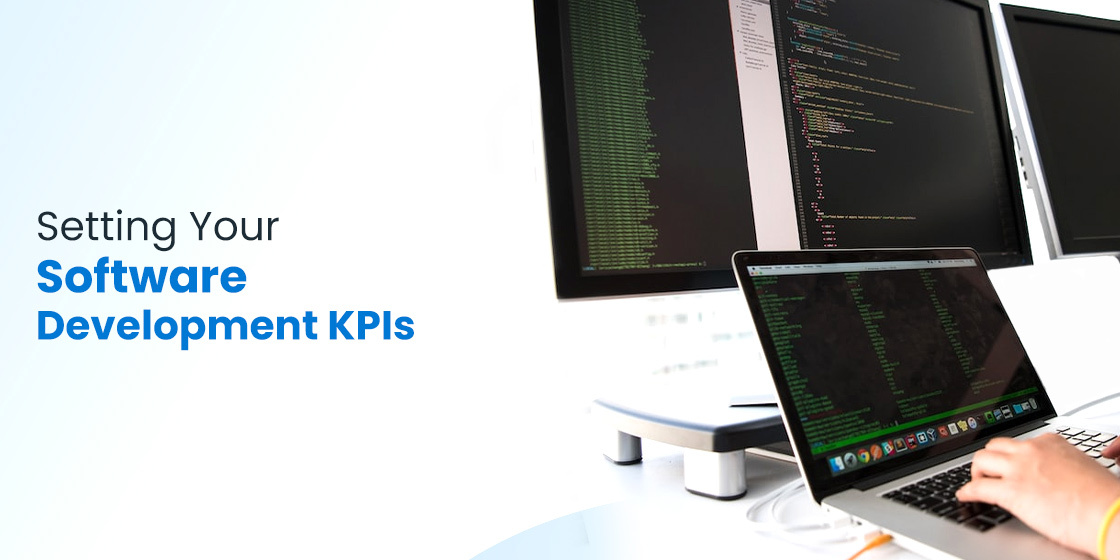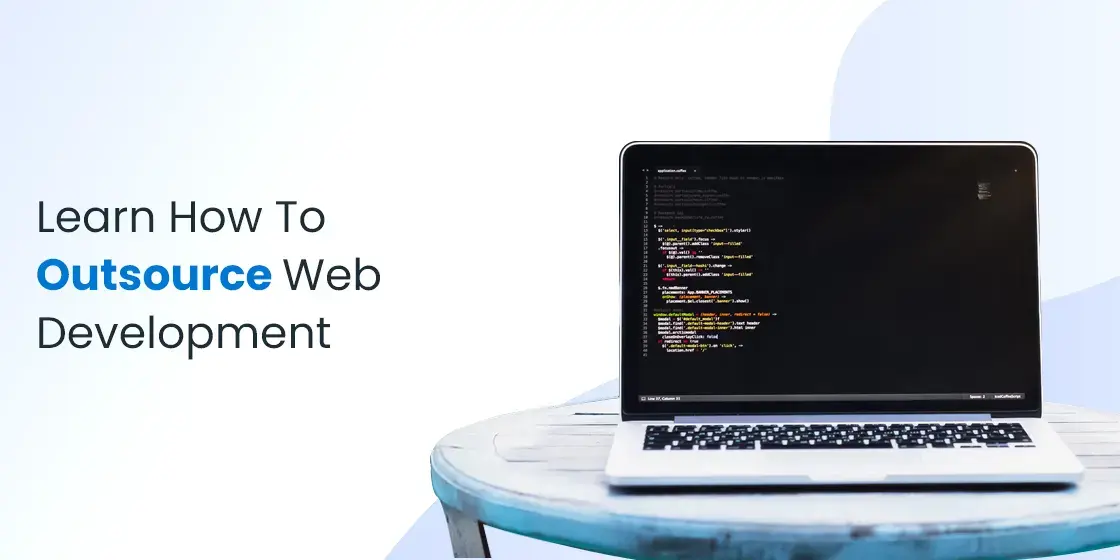Table Of Content
Measuring Software Development Performance Through Important KPIs
It doesn’t matter how good your product might be, or how innovative your strategy, if there is no way that its impact or progress could be tracked. That is the same in software development too. Whenever a team embarks on a software development project, they define a set of software development KPIs to monitor and track the progress of the project.
The reason for monitoring software development KPIs, or key performance indicators, is right in the name itself. They are used to assess the performance of your project team. Let’s say that you have a project that you need to deliver in six weeks. For this project, you are setting software development goals based on the deliverables and milestones. If by week 4, your team has met all the KPIs on time, then you can surely say that there is a high chance that the project will be finished and delivered on time.
However, if they haven’t been able to meet those deliverables KPIs, then you can say that you are running behind, and the project might take longer than expected.
Now time is just one of the KPIs that is used. In software development, there are a lot more that are used by custom software development services providers, who tweak them based on the project requirements.
Let’s take a look at the importance of KPIs in software development, and then discuss some of the top development KPIs you need to use today.
What are Software Development KPIs?

KPIs or key performance indicators are checks and values, which are designed to measure the performance of some activity or project. In software development, it refers to the progress and quality of your development efforts and their alignment with the business strategy. For example if your business adheres to a certain ISO standard, then your KPIs would also include checks to see if the developed codebases are up to that standard.
While to the uninitiated, it may seem that different software projects might work with the same set of KPIs. However, that is not true. One of the essential parts of software development planning is finding the right KPIs that would work well for your aspect of the project.
Some of the most popular software development process improvement KPIs used among developers are lines of code, the number of commits, or even the number of times it has been deployed. While these KPIs might work at the developer level, at the project monitoring levels these KPIs are next to useless.
That is because they do not show how the progress of the project according to the actual business objectives. Therefore, the KPIs you generally choose to track and manage your software development projects are more comprehensive and clear regarding the progress related to business goals.
Now the problem that arises here is that business managers are generally clueless about the intricacies of developing a software for a business. And development managers are often in the dark about the organizational goals. So how can we come up with the ideal KPIs that effectively track our project?
Well, one thing you need to be aware of is the type of methodology that is being followed to develop your software. For the traditional waterfall method, the KPIs we mentioned earlier would work perfectly fine. However, for the more dynamic agile methodology, you need to come up with something different.
For agile software development, the KPIs need to measure the speed of development with a focus on delivering and deploying consistently. Agile KPIs should track the project’s ability to scale comprehensively. We can say that its more than just tracking the project’s progress. Instead, it is about creating value for the business.
Why are These Key Performance Metrics so Important in Software Development Projects?

Now, we have been talking about how it is necessary to have the right software development metrics. But why do we intrinsically need these metrics for software development projects in the first place?
Setting some kind of metric to track progress is based on the premise that you are committed to completing them on time and with quality. Moreover, not only you, but your team members should also be invested in fulfilling those metrics. That way you will end up with a high-quality product within time and budget.
One other benefit of these metrics is that in case of an issue or problem, you would be able to pinpoint where the problem occurred. Therefore, next time, you can beware of that phase, and manage the associated risks accordingly.
We can say that besides accountability and issue tracking, it also keeps productivity of the agile software development team in check. By tracking the progress according to the organizational goals, the team will be able to see where their efforts are resulting in a positive impact on the company. This in turn bolsters the productivity even more.
Top Software Development KPI Examples You Need to Know Today

Now that you are familiar with the concept of key performance indicators, and how they can help a business improve their software development efforts using the right set of KPIs, let’s take a look at some of the most important software development KPIs you should be using today.
Velocity
Lets start with one of the most important KPIs that you could use today. This term refers to the amount of development work your team can deliver within one sprint. One thing to note here is that as the timeframe here is a sprint-long, we can understand that we are talking about agile development methodology.
Now for those who do not know what a sprint is; it is a set period no more than 4 weeks in length, in which a set number of activities are planned to enhance software delivery performance.
Coming back to velocity, there are many ways to measure it for a continuous software development process. One of the most popular ways to do that is to use story points, which is used to measure the amount of effort that is needed to be put into the project.
But how will you mark out the story points in the first place? For that, you will need to evaluate how big of a software project it would be, and how long it would take to develop it. In general, it usually takes about three consecutive sprints for you to know the average velocity of your team for a project.
And once you have the average velocity for your team, you will be able to evaluate whether the team goals you have assigned are realistic and achievable or not.
Software Development Cycle Time
Next up, is the debate about software development cycle time metrics. This KPI measures how much time is spent working on a certain task. Cycle time is generally used by software developers to create cycle time charts. They are used to measure and assess how efficient a software development lifecycle is.
There are many advantages to measuring cycle times. For one, it shows objectively how productive your team actually has been. Moreover, it also gives you an idea of how quickly your development team would be able to finish the tasks scheduled ahead, as well as the overall project.
On the other hand, measuring cycle time can also help you identify any issues that might cause problems for your otherwise efficient work processes.
Cumulative Flow
Cumulative flow is more of a visual aid detailing the state of your software development tasks, also called tickets, using a diagram.
The performance metrics uses different colors that denote different states of the tasks, such as “In-Progress”, “Approved”, “Backlog”, or more. Each color is arranged in a band, and the thickness of the band represents the cycle time for that state.
This KPI is very useful, especially when you start to feel that your project is facing some bottlenecks in an otherwise smooth software development process. The cumulative flow chart can help you assess and balance your workflow in case of any bottlenecks.
Flow Efficiency
This KPI is used to measure the difference or ratio between the active time and total time on a project. Usually we see that a task in progress doesn’t always mean that it is being worked on actively. Generally, it shows the time that task is standing still. That is because there are times when a task cannot be worked on, such as when a developer cannot just jump to the next task or back from another project.
The process to calculate flow efficiency is quite simple. You divide the time that you actually spent on that task by the total cycle time for that task. The purpose of this would be to assess time periods of low efficiency, which could be studied further to evaluate whether they could be improved, or mitigated in some way.
Code Coverage
Code coverage is one of those software quality assurance KPIs that is used by the development teams to measure the quality of their code. It may seem like a basic KPI, however, it is extremely important in the software development lifecycle that focuses on continuous delivery and TDD (test-driven development).
Another name code coverage is known by is test coverage. And one of its major uses is to evaluate how much of your developed code executes properly when tested. By using it, you will be able to identify sections of your code that could not execute due to some bugs or issues. And while it’s unreasonable to aim for a 100% complete coverage, the higher the number, the better and bug-free your code.
And that means that there is less debugging ahead of you.
Code Stability & Code Churn
While code stability and code churn are two separate KPIs, the reason they are mentioned together is that they are often used together. Let us start with code stability.
Code stability is a difficult metric to measure by all respects. That is because by its very definition, stable code means that there is very little that could potentially harm your software product. The way it is measured can be different from developer to developer.
Some measure it by charting the frequency of changes to the code. Others measure it by taking the percentage of code that results in downtime. Whatever way you choose for your team, the end result would be a measure of stability for your codebase.
Now, code churn is another metric of code stability, as it measures the frequency of change in code over time. The logic behind it is that if there is a need to change the code repeatedly to incorporate new features, then the stability of the product is at high risk, which would require a high level of maintenance and software development quality assurance.
Code Simplicity
Code simplicity is more of a generic software development KPI, but very important nevertheless. Multiple metrics are used to measure it. For example, cyclomatic complexity is a quantitative measure that calculates the number of independent paths that your codebase takes.
In general, the fewer the number of paths, the better the chances that the code is simple. And the simpler the code, the easier it is to test and maintain.
FAQs
| What is KPI in software development? KPIs or key performance indicators are some metrics that measure the performance of your project’s activity with respect to your business goals. |
| What KPIs should I track to ensure successful software development? To ensure the success of a software development process, you need to track some important KPIs, which includes: 1. Internal process and quality 2. Customer satisfaction 3. Financial performance 4. Growth supportive |
| What are the most important KPIs for software development? There are various KPIs that should be kept in mind while developing a software solution. However, some of the most important ones among them includes: 1. Cycle time 2. Velocity 3. Deployment frequency 4. Error detection ratio |
| How do you measure the success of a software development project? The success of a software development project can be measured by its efficient deployment and execution. Besides that, client reviews can also help you to know about the project success. |
| How can I track the progress of software development? To track the progress of your software development project, you need to see the status of different tasks. It will let you know which development jobs are completed on time and which should be given more attention. |
| What metrics should I use to evaluate software developers? To evaluate the performance of software developers, you need to see their overall task completion rate. In addition to that, you need to see whether they are completing the tasks on the given deadline or not. |
| How do I set up and track software development KPIs? To set up and track software development KPIs, you need to first understand the objectives of your project. This will help you to set exact KPIs for the success of your software product. |
| What are the benefits of tracking software development KPIs? By tracking software development KPIs, you get to know about the real-time progress of the project. This lets you know which tasks are still lingering on and how much the time has left to complete the product. |
| How do I measure the success of a software development team? A software development team succeeds when the project is delivered successfully to the clients. This is the basic evaluation factor that lets you know about their performance as a team. |
Conclusion
To conclude, the software development KPIs you choose for your software project have a huge impact on the project’s success. That is because the more KPIs that can effectively track the progress of that project, the better the chance that you will be able to deliver the software you envisioned, on time, of a high quality, and without affecting the software development cost.
If you are confused about what KPIs would be ideal for your software development project, the ones listed above are a great place to start.
Empower your digital initiatives with BariTechSol, a premier custom software development company. Our skilled team tailors cutting-edge solutions to your unique needs. Elevate your tech experience and stay ahead in the digital realm. Partner with BaritechSol and code the success of your next big idea.


